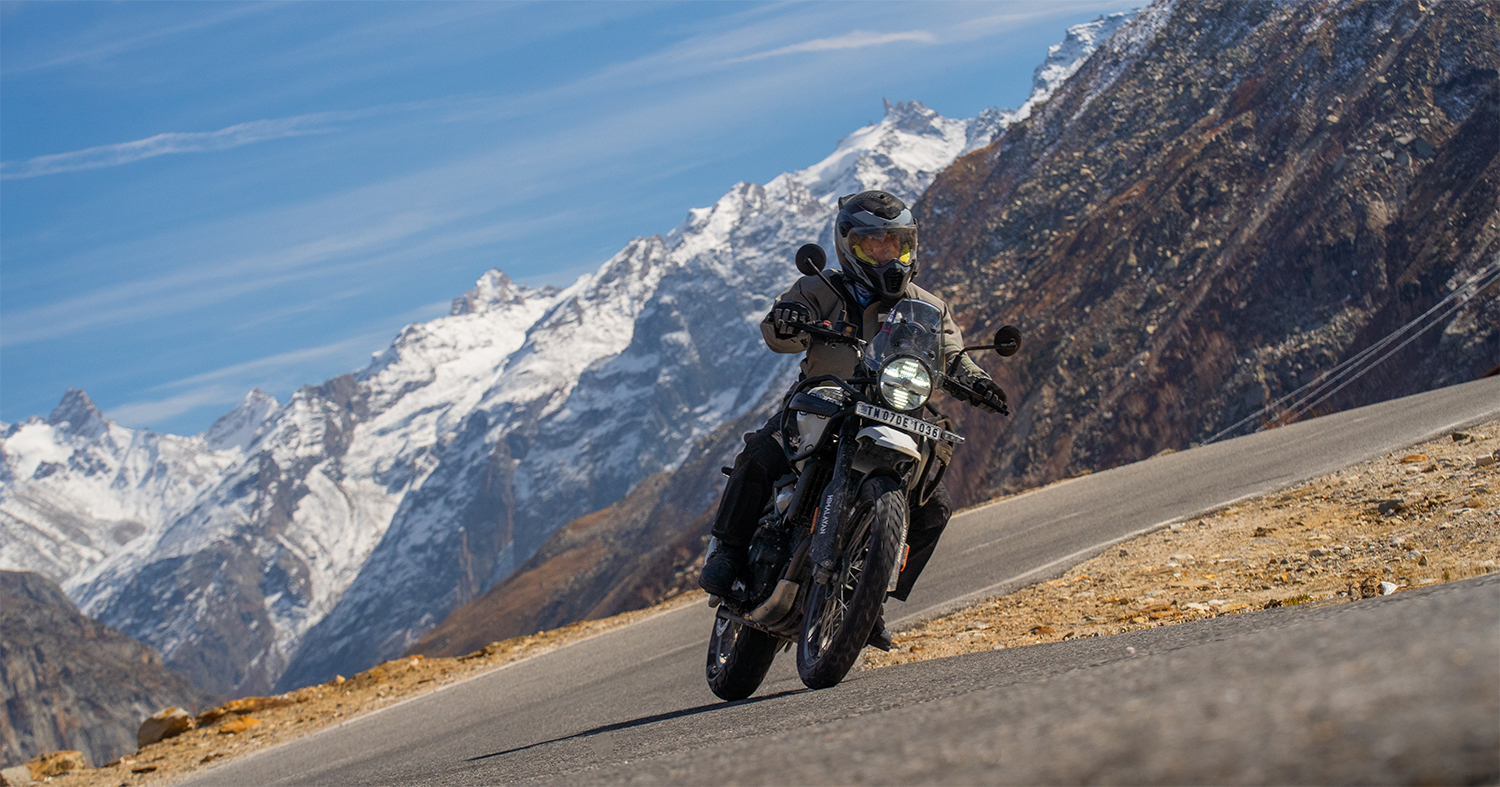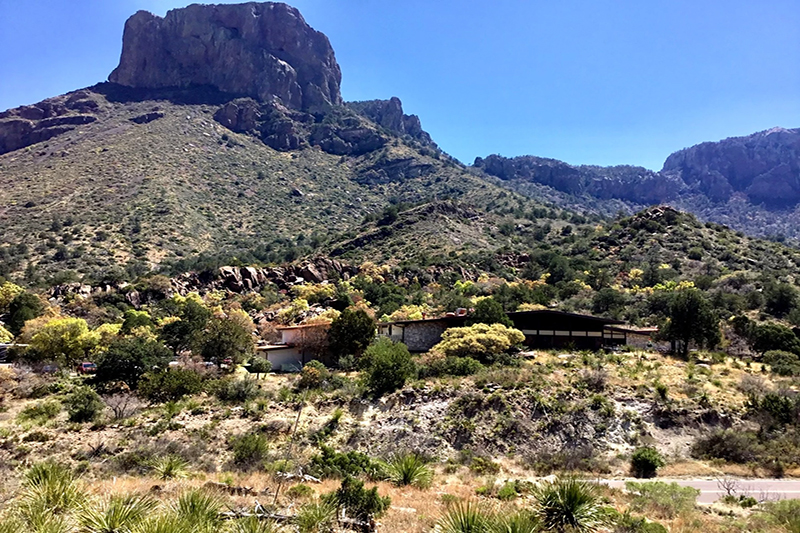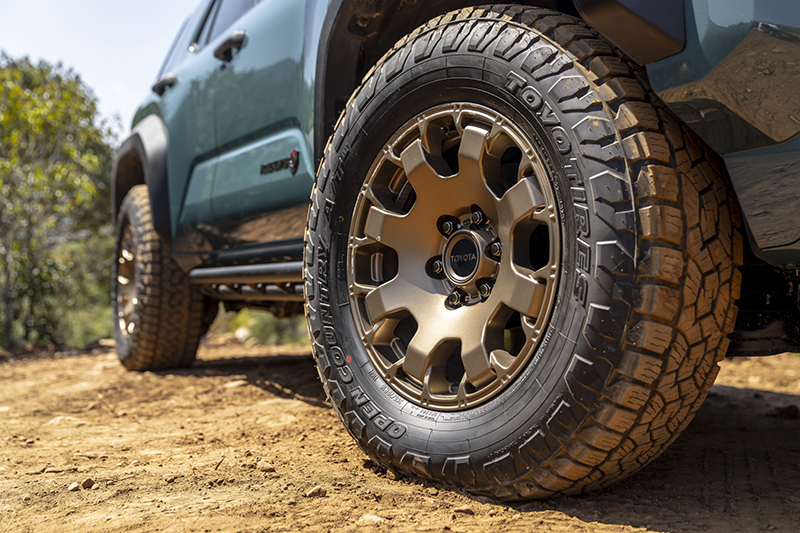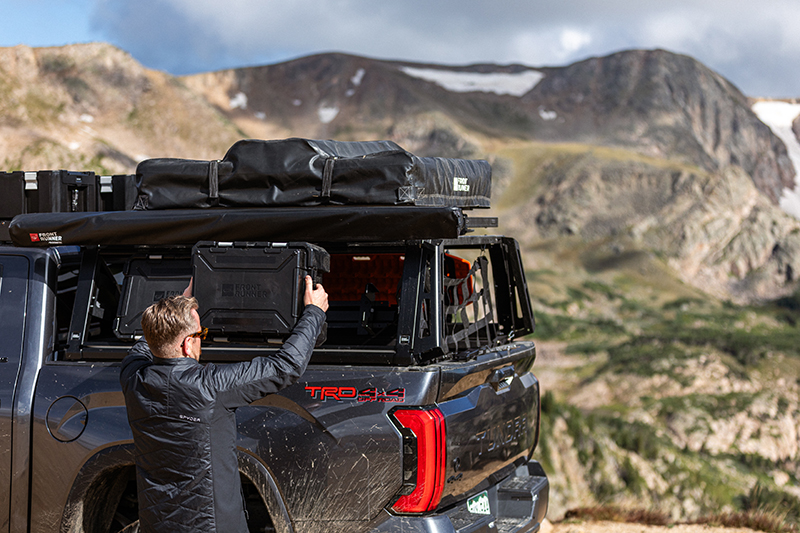Royal Enfield’s new Himalayan delivers adventure that’s exciting whether on or off-pavement
As I meandered and navigated amongst the bustle of tuk-tuks, tractors, cars, pedestrians and yes, cows, my hyper awareness of the obstacles around me were subdued by the pleasant whir of the Sherpa 450 motor powering my way across northern India.
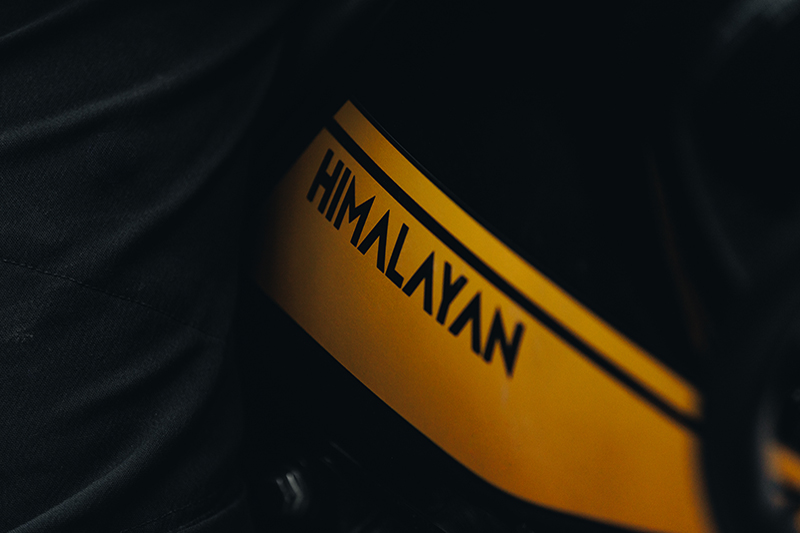
Photo courtesy of Royal Enfield
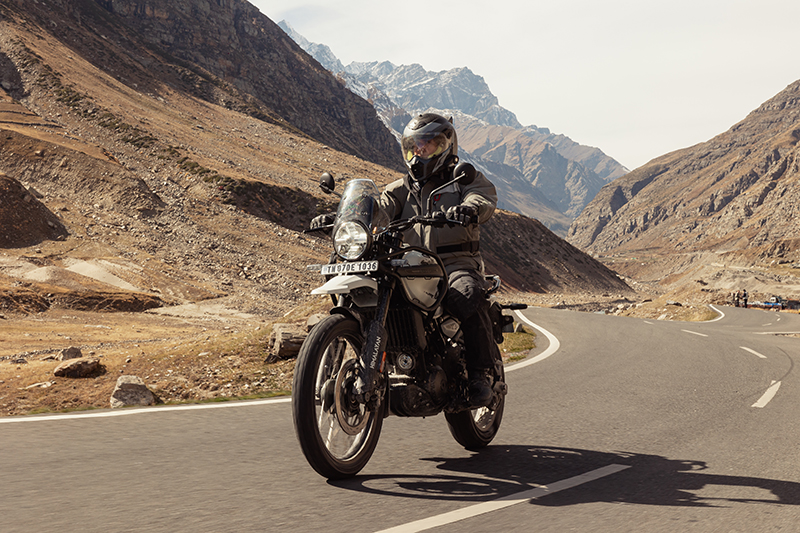
To say the Sherpa 450 is the crown jewel of Royal Enfield’s latest generation Himalayan adventure motorcycle is only one of a host of sentiments I had during my time with the bike. Royal Enfield has brought to the world stage one of the most exciting conduits of adventure I’ve experienced since I first began my two-wheeled endeavors over eight years ago.
Way back at the turn of the 20th century, Royal Enfield began producing motorcycles with little requirement to evolve given the dynamics of the Indian market the company has predominantly served. The need for simplicity, where two-wheels are the norm rather than the exception, had been a priority for over a century. However, as the company expanded its lineup to adapt to a broader changing world, Royal Enfield went from being a bit of an anomaly in the western world to a company whose allure and passion, as evidenced by everyone I met while on my visit to India, has established itself as one whose vision and focus undoubtedly is guiding it to become a leading producer of motorcycles globally. The Himalayan’s debut in 2016 is a testament to this vision.
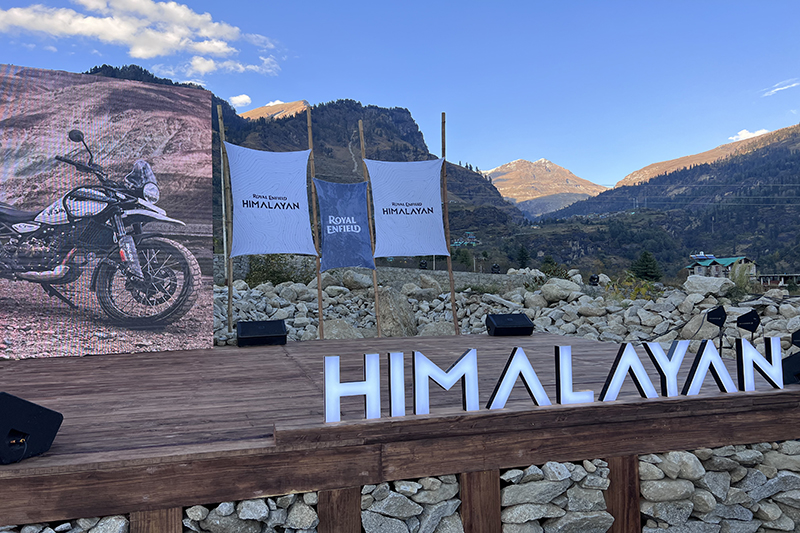
In the foothills of the Himalayan Mountains at the global media launch of the new Royal Enfield Himalayan
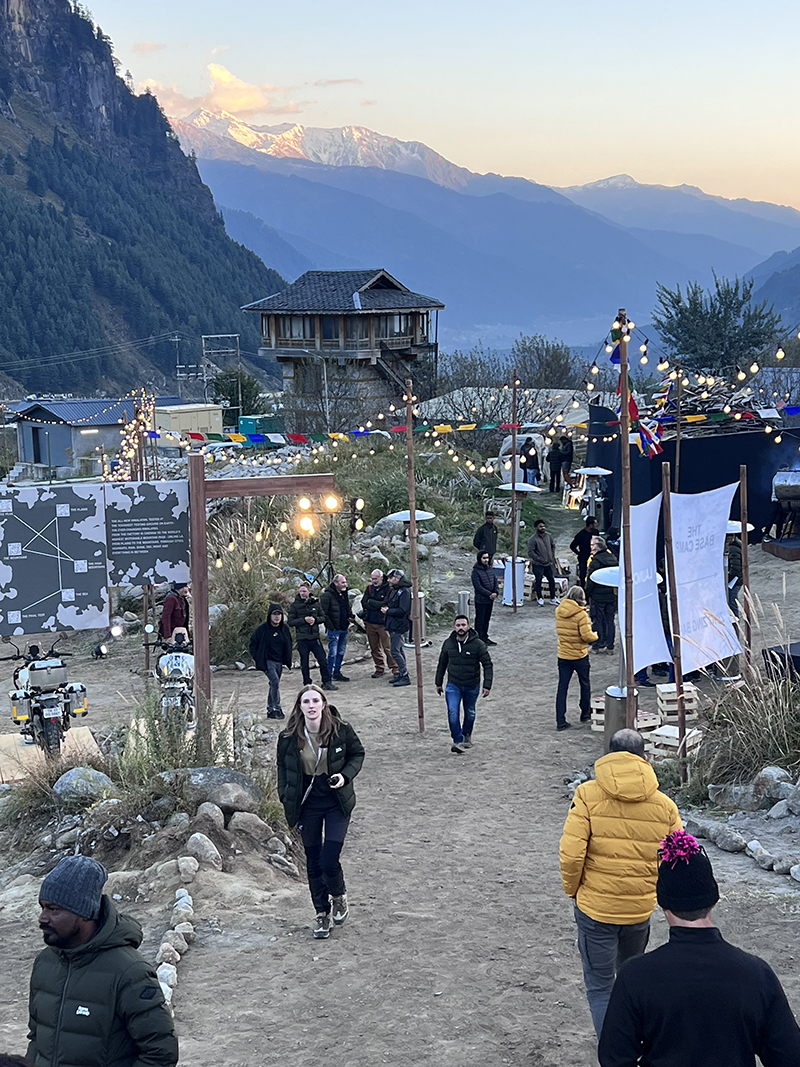
Looking out at the basecamp village created by Royal Enfield for the Himalayan’s global launch
So, what makes the latest iteration of the Himalayan such a compelling ride? Sid Lal, CEO of Royal Enfield and an avid motorcyclist whose presence was prominent during my time with his team in India, describes the bike perfectly: It’s the Bruce Lee of motorcycles. At its core, the Himalayan is strong, agile, quick, and intelligent if not simple in its footprint. All of which are qualities that parallel successful martial artists and translate perfectly to the world of adventure motorcycling where a misperception that brute force and overwhelming power are understood to translate into an effective experience once the kickstand is up. It was these traits Sid described that were abundantly evident while I trekked amongst the highest mountain range in the world on a bike that shares little with its previous generation other than its namesake.
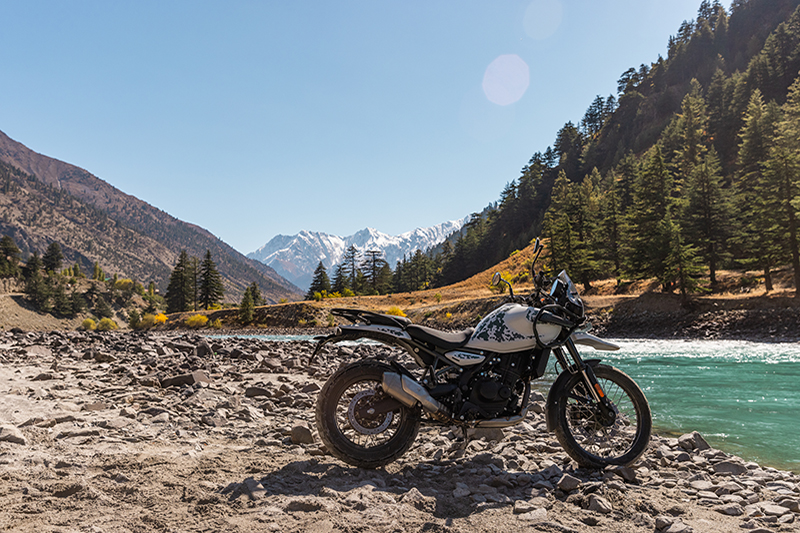
The all-new second generation Himalayan. Photo courtesy of Royal Enfield

The Sherpa 450. Photo courtesy of Royal Enfield
As noted before, the Sherpa 450 is the gem of the new Himalayan. Peak horsepower is up nearly 65% to nearly 40hps compared to its 411cc predecessor. Torque is also up nearly 25% at 29.5 lb-ft with broad torque across its bandwidth, providing a feel more akin to several 650cc bikes I’ve ridden, most notably the latest generation KLR 650. The engine is also liquid-cooled versus the previous generation’s air-cooled variant, helping to maximize performance in a package that even at elevation was strong and responsive. Mated to its six-speed tranny also helps with how power is delivered and accessible across the powertrain’s bandwidth. During my time on the bike, I never utilized the bike’s sixth gear as I had all the power I needed at speeds up to 80mph with rpms hovering between 5500-6000.
Ergonomically, the bike fits a variety of riders well with two ride heights available from two adjustable seat options, a standard version and an optional low variant. At 5’9” and 160lbs, the standard seat without adjustment suited me perfectly and was comfortable while in the saddle all day, on and off-pavement.
Complimenting the bike’s feel is the upgraded suspension. First off, ground clearance and wheelbase have increased to 9” above the ground and nearly 1.5” additional in length from the previous gen. Ride quality is enhanced up front with a 43mm inverted Showa fork delivering 7.9” of wheel travel while a Showa adjustable monoshock in the rear provides the same 7.9” of wheel travel. The previous generation Himalayan offered 7.1” of wheel travel and didn’t feature an adjustable shock which is critical in dampening and payload. Speaking of payload, the bike can handle 436lbs so you can metaphorically carry your house and kitchen sink if need be. Stopping power is delivered via disc brakes with standard dual -channel ABS that can be turned off at the rear if tackling heavy terrain off-pavement.
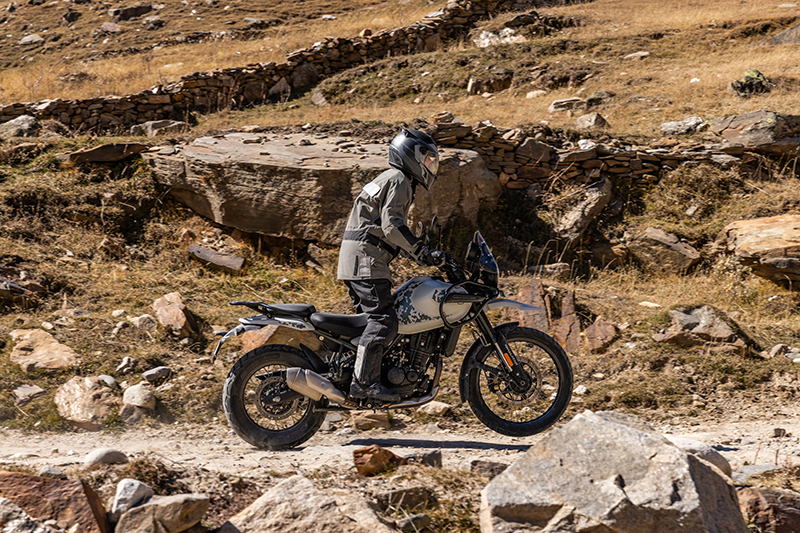
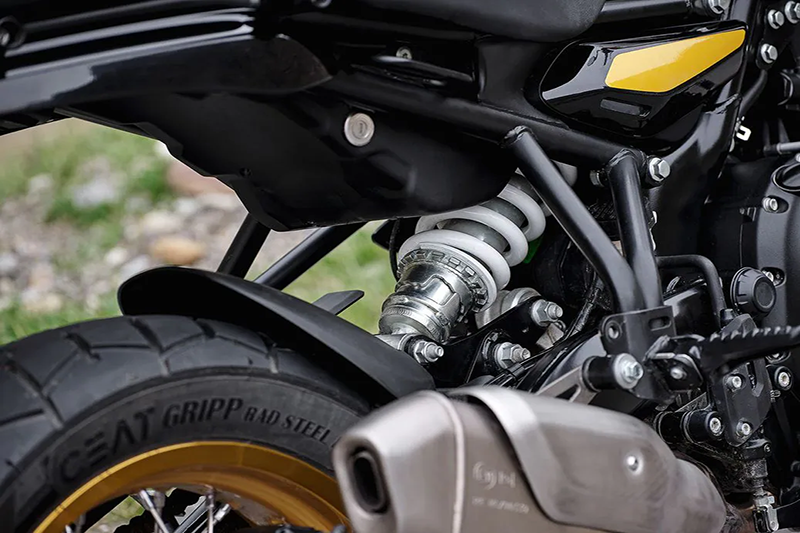
The Showa adjustable monoshock provides 7.9″ of wheel travel. Photo courtesy of Royal Enfield
Regarding electronics, I was super impressed by the singular 4” Tripper TFT display. A variety of ride modes provide variants in power delivery based on how you’re riding the bike which I found easy to engage and a leap forward from the analog capability of the first generation Himalayan. The Tripper display provides simplicity with everything you want and nothing you don’t. The screen’s clarity and variety of display options, including an “analog” version as well as multiple “modern” options allow you to toggle amongst a suite of offerings based on what you want shown while the kickstand is up. Smartphone connectivity, along with map navigation via a proprietary Google navigation system, works wonderfully though it requires utilizing your phone’s Bluetooth and I found the power draw on my phone to be quite rapid. Fortunately, there’s an integrated USB-C charging port on the underside of the handlebar that’s convenient and accessible when you need it on the fly.
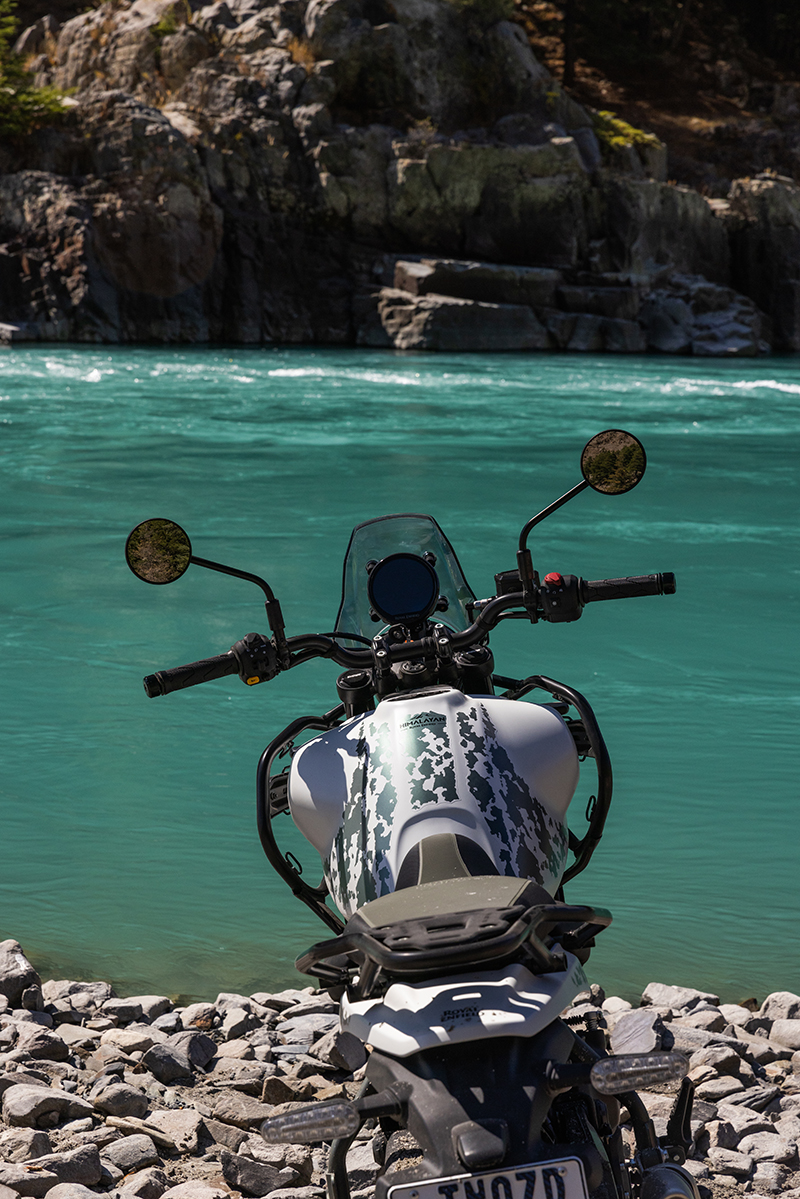
View from the cockpit. Photo courtesy of Royal Enfield
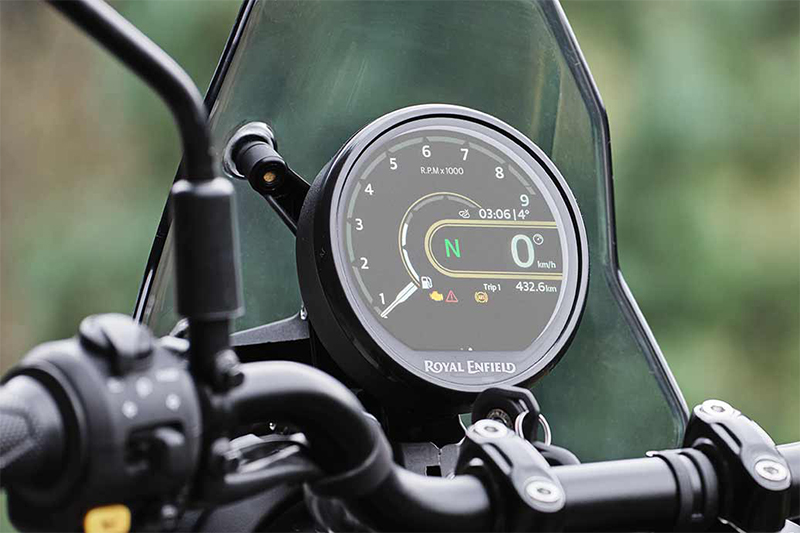
The Tripper 4″ TFT display is an all-in-one readout that’s intelligently designed with various display modes. Photo courtesy of Royal Enfield
As for my riding impressions, the new Himalayan is a bike to take notice. Compared to its first generation, which I own and enjoy because of its simplicity and analog nature and design, the new Himalayan is qualitatively better than before. Whether I was navigating the often chaotic streets of northern India or traversing water crossings and boulders in the midst of the Himalayan Mountains, I was thrilled by the bike’s nimble character through the curves, along switchbacks, on the straights, through the Atal Road Tunnel – India’s longest high altitude tunnel – or along the Chenab River deep in the Himalayan Mountains. The Himalayan delivers a pleasurable ride with power when needed, adequate wheel travel off-pavement, and overall responsiveness throughout all the sights and experiences I had at elevation. While there was power loss at altitude, the bike’s overall bandwidth excelled and I can only imagine the bike’s full power capability at sea level. Its design looks great and exhibits the qualities of strength, agility, quickness, and intelligence noted by Royal Enfield’s CEO and exhibited in its overall demeanor. While the bike isn’t outfitted with the highest level components found on other bikes in this space, it’s robust and truly built for all roads or no roads at all. My only complaint? The rubber on the footpegs makes for slippery occurrences when wet. I’d advise removing the rubber inserts altogether, easily achieved by unbolting the two bolts on the footpegs.
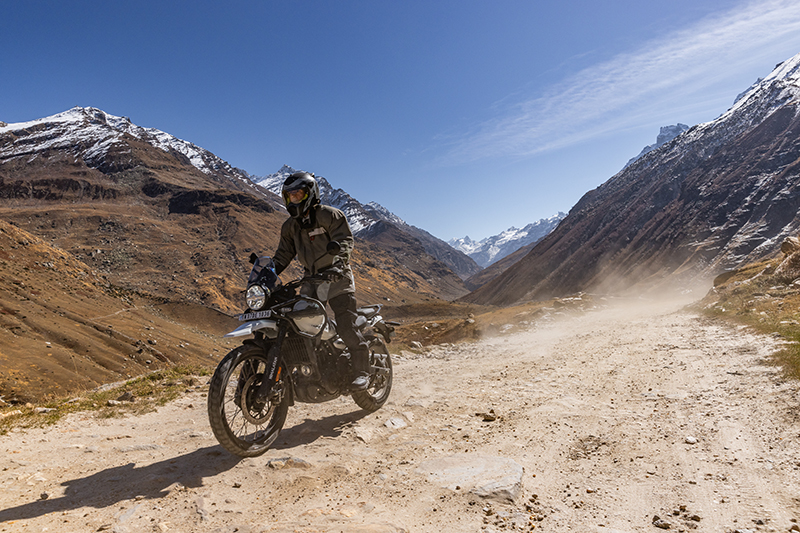
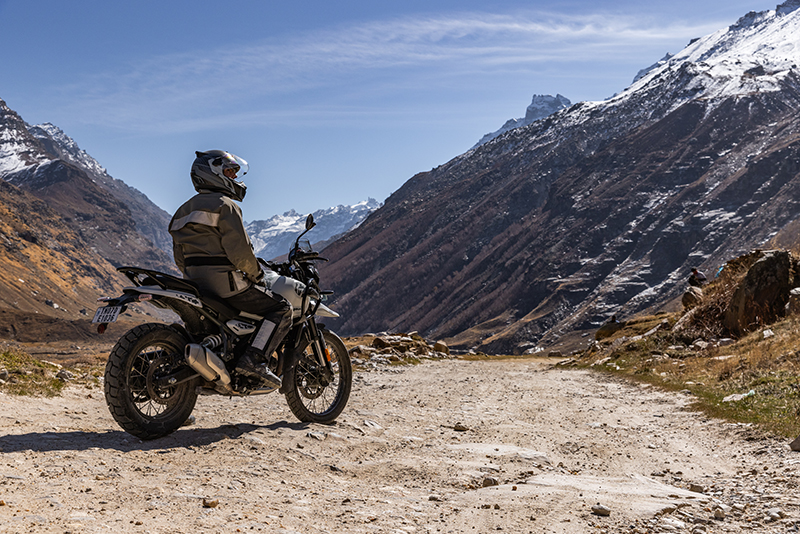
Royal Enfield’s mantra for adventure is delivered without question in the new Himalayan. While I was fortunate to ride the bike where it was born, amongst the tallest mountain range in the world, it’s a bike any adventurist or motorcycle enthusiast will enjoy. And while it’s not the brute like many of the big bikes adventure motorcyclists have come to prefer in the U.S., I believe its likeness to Bruce Lee can provide any adventurist the thrill its designers envisioned. It certainly did for me, and I can’t wait to own one.
Editor Note: At the time of this article, Royal Enfield hasn’t yet released U.S. pricing on the Himalayan; however, pricing has been released for the UK and Euro markets and I’ve done a conversion to guestimate what to expect once the Himalayan arrives stateside.
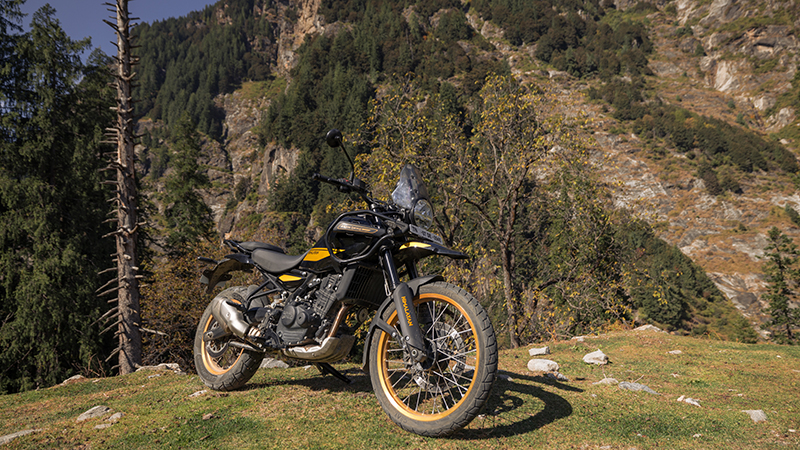
The Hanle Black version of Royal Enfield’s second generation Himalayan is gorgeous in person. Photo courtesy of Royal Enfield
The Himalayan is featured in three models: The base model in Kaza Brown will fetch 5,900 euro which calculates to $1,000 USD more than the current model Himalayan. The Pass models, featured in Slate Himalayan Salt or Slate Himalayan Poppy Blue color, will be offered at 6,000 euro or approximately $6,560. The Summit model without tubeless wheels in Hanle Black will be offered at 6,200 euro or just under $6,800. For those seeking tubeless wheels, the Summit models in Kamet White, the bike I rode while on my Himalayan journey in India and which I absolutely fell in love with, or the Hanle Black variant, will go for 6,450 – 6,500 euro or roughly $7,050-$7,100 in American coin.
Learn more about Royal Enfield by visiting www.royalenfield.com.
OutdoorX4 Magazine – Promoting responsible vehicle-based adventure travel and outdoors adventure


